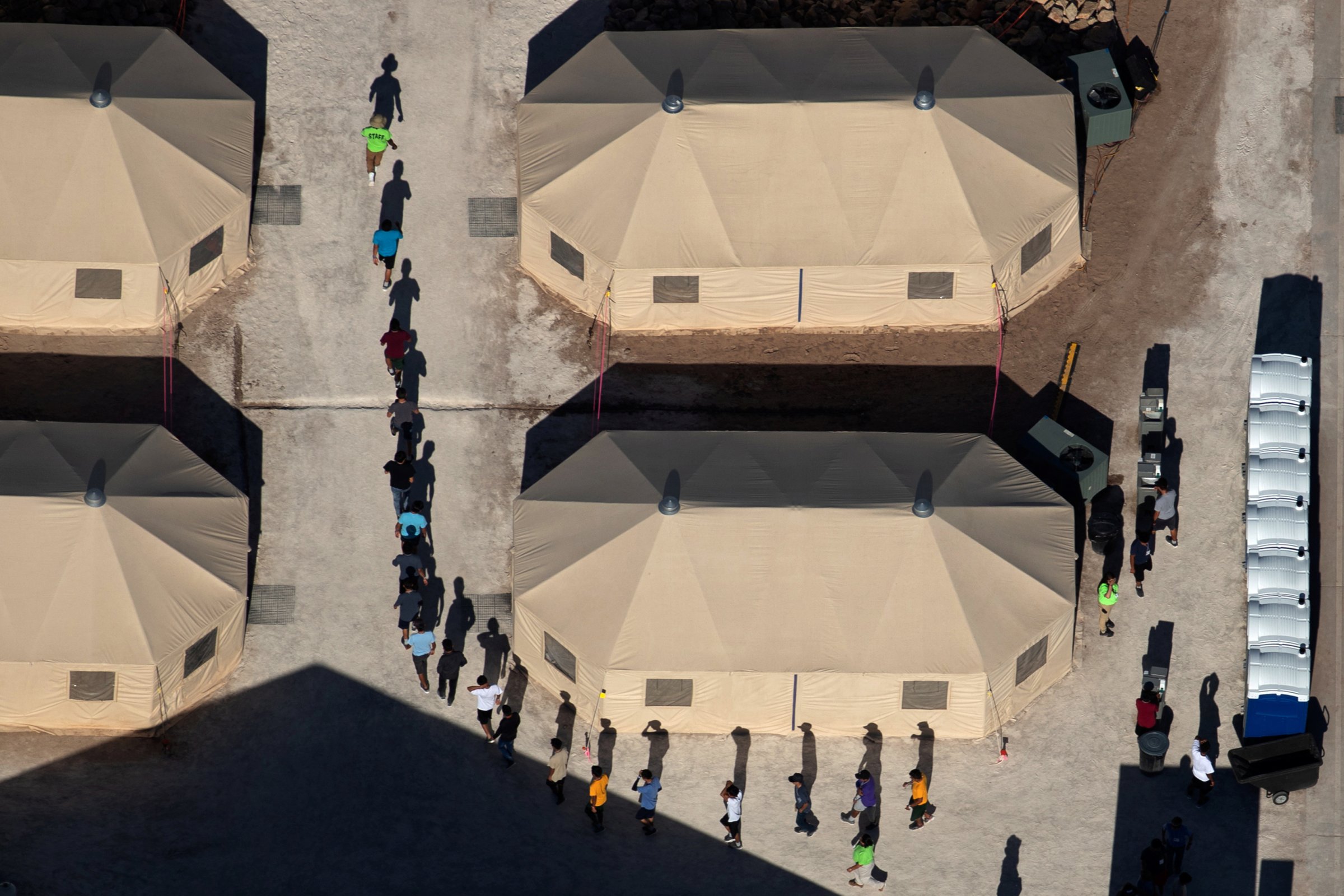
The Trump Administration is assessing whether military bases in Oklahoma, Montana and Georgia are suitable to shelter immigrant children who are apprehended at the U.S.-Mexico border without an adult relative.
The evaluations are part of the government’s preparations to house a record number of minors held by the U.S. Department of Health and Human Services. The agency operates about 168 facilities and programs in 23 states, but it’s not enough space to properly care for the increasing numbers of unaccompanied migrant children in its custody.
Health and Human Services, which is responsible for caring for children under 18 years old until they can be given to an adult relative, stated it has taken about 40,900 children into custody through April 30. That’s a 57% increase from last year, which is a rate on-pace to surpass the record figures in 2016, when 59,171 minors were taken into custody.
The Pentagon is now on the hook to help shelter 5,000 migrant children at its facilities. So far, three bases are under assessment, according to Major Chris Mitchell, a Pentagon spokesman. The list includes Fort Sill in Oklahoma, an Army installation established in the 1860s during fighting with Native Americans; Malmstrom Air Force Base, a base with more than 100 intercontinental ballistic missiles tipped with nuclear warheads buried underground; and Fort Benning in Georgia, a sprawling Army facility that’s home to 120,000 active-duty military, family members, retirees and civilian employees.
The children would be held inside facilities that are separate from the general on-base population and HHS personnel, not American troops, will oversee them. “This effort will have no impact on the Defense Department’s ability to conduct its primary missions nor on military readiness,” Mitchell said.
Using military bases in this way is not new. In 2014, the Obama Administration placed around 7,700 migrant children on bases in Texas, California and Oklahoma. The temporary shelters were shuttered after four months. Last year, the government evaluated several military bases to shelter migrants, but ultimately decided not to use the facilities.
However, it may be unavoidable this year. Apprehensions of children at the border are already nearing record numbers. U.S. Customs and Border Protection released new data Wednesday that showed the figures had skyrocketed to 56,278 at the end of May, a 74% increase over last year. The influx of migrants, mainly from Central America, is straining an already exhausted system, U.S. officials say. Six children have died while in U.S. custody since last year.
Meanwhile, arrests along the Mexico border has surged to historic levels in recent months. More than 144,270 migrants were taken into custody in May, for instance, the highest monthly tally in years.
With federal facilities running out of room, the White House has already requested $2.9 billion in emergency funding to house the children – and may need an additional $1.4 billion in a “worst case scenario,” according to a May 15 letter from HHS Secretary Alex Azar.
The increasingly perilous funding situation was demonstrated in a Washington Post report Wednesday that said HHS is “canceling English classes, recreational programs, and legal aid for unaccompanied minors staying in federal migrant shelters nationwide” in an effort to save money.
The Pentagon has been ordered to support the Department of Homeland Security on the border since Trump’s emergency declaration more than a year ago. Since then, the Defense Department has approved numerous Homeland Security requests, including for aerial reconnaissance, ground surveillance, search and rescue support, medical support, engineering support, helicopter transportation, personnel protection and other needs. Separately, the Pentagon announced two military contracts in April worth $976 million to construct a wall along the U.S. border with Mexico.
In addition, American forces have strung coils of razor wire atop southern border fences and points of entry with Mexico in California, Arizona and Texas. U.S. forces have also started parking pick-up trucks mounted with telescopic video cameras, known as “Mobile Surveillance Cameras,” in all nine border Patrol Sectors in each of the four states bordering Mexico. The devices are armed with infrared cameras, enabling troops to watch for illegal border crossings to operate day or night.
There are now about 5,000 troops, including 2,000 members of the National Guard, deployed along the 2,000 mile-long southwest border.
Acting Secretary of Defense Patrick Shanahan said last month that the Pentagon has started to examine how much longer U.S. troops would be required to support the border mission. “We really need to get back to our primary missions and continue to generate readiness,” he said.
More Must-Reads From TIME
- The 100 Most Influential People of 2024
- Coco Gauff Is Playing for Herself Now
- Scenes From Pro-Palestinian Encampments Across U.S. Universities
- 6 Compliments That Land Every Time
- If You're Dating Right Now , You're Brave: Column
- The AI That Could Heal a Divided Internet
- Fallout Is a Brilliant Model for the Future of Video Game Adaptations
- Want Weekly Recs on What to Watch, Read, and More? Sign Up for Worth Your Time
Write to W.J. Hennigan at william.hennigan@time.com